
Our current Christmas of course has everything to do with the birth of Christ1. The corresponding expressions of this feast often go much further back and seem based on religions and traditions that even remotely had nothing to do with today's Christianity, not even with the birth of Jesus. The date, December the 25th , would among other things be borrowed from the birthday of the god Mithras, originally from Persian and also born out of a virgin, who, at the time of the birth of Christ was immensely popular in the Roman Empire for already many years (see ' the last Mithras shrine ' ).
The Christmas tree would come from the pagan Mid-winter-festival.
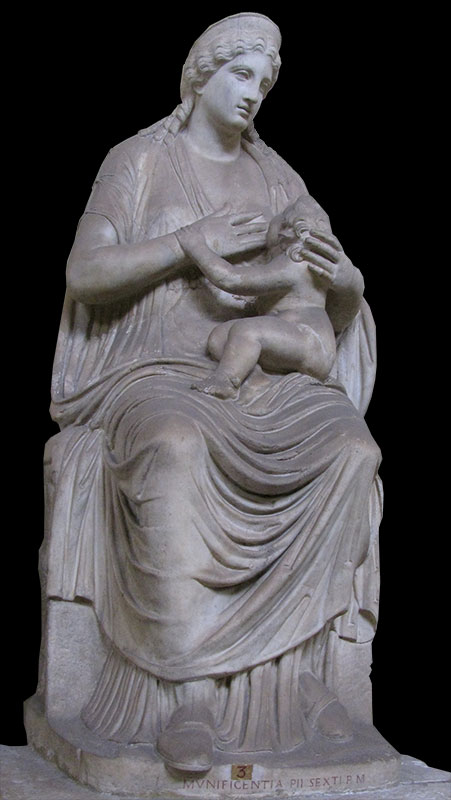
Horus (Vatican Museum)
The image of Maria with child is clearly retrieved from the Egyptian goddess Isis with her child the god Horus. The Isis culture was extremely popular in the Roman world. And than we haven't talked about the influences of the topic we like to discuss in this article, the Saturnalia.
How could so many ' pagan ' traditions enter our Christmas experience?
To switch to another religion, in this case to facilitate Christianity, many ' pagan ' customs were not prohibited or eliminated, but implemented with a Christian sauce into the new faith. Temples were not dismantled or destroyed but stripped of pagan symbols and adapted to the new religion, in which many old customs just took place, albeit in a new religious context. This also happened with the Saturnalia, probably the biggest Roman festivals of all. These festivities, originally connected with the Roman god Saturn remained still popular for a very long time in the Christian world. Also from this festival several traditions have survived in our Christmas celebration.

De Saturnaliën
During the late Kingdom a Festival in honour of the god Saturn was established in Rome, the Saturnalia. The Romans did have some good reasons for honouring this god. Mythological stories told us that Saturn, on the run for Jupiter, had found accommodation in the Kingdom of Janus in Italy. Therefor Janus was punished by Jupiter with two faces. One looking to the past and one watching the future. Janus was also called the god of the passages because every deity had to be called through him.
Saturn learnt the inhabitants of the land of King Janus the art of agriculture, taught them writing and the use of coins. Janus was one and all admiration for Saturn and proposed to govern the Kingdom together. The period under King Saturn was called ' golden years '. Social discrimination, there was not, on the contrary, everyone was equal and people had no private property.
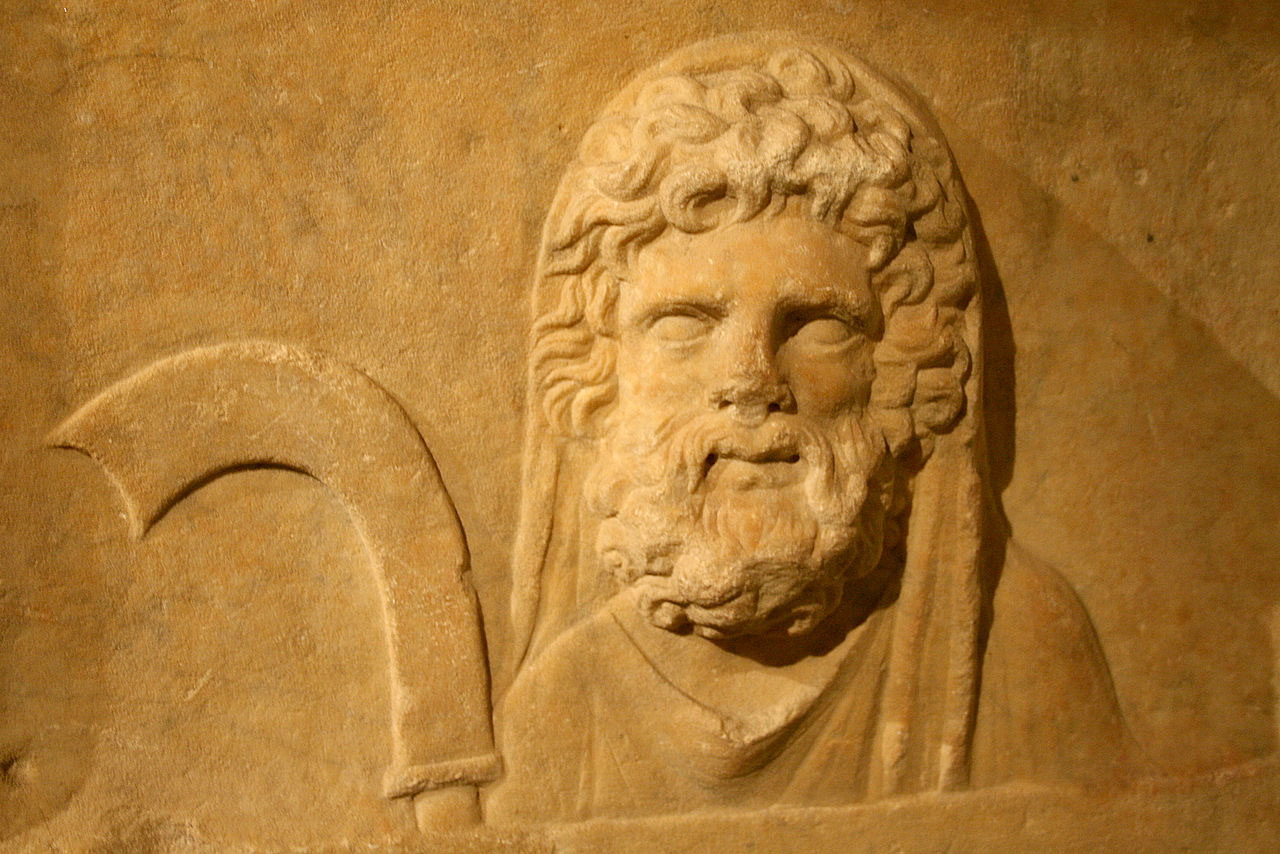
When Saturn suddenly left Janus took some measures to honour Saturn. So he called the whole country where he was king ‘Saturnia ', built an altar in honour of the god Saturn and made some rituals for the god that he called the Saturnalia.
Janus and Saturn left a great impression on the later population of Italy. The month of January was called after Janus and in the month of December the Saturnalia, the festival in honour of Saturn, took place.
According to Livius4 the first official Saturnalia coincided with the year in which the Temple of Saturn on the Forum Romanum in Rome was built, December the 17th of the year 497 BC. Henceforth on this day the Saturnalia would be celebrated. From the beginning the temple was used also as an archive for social security legislation and international agreements. Also the Treasury was kept there because it was said that during the reign of King Saturn no theft was committed, because no one had private property.
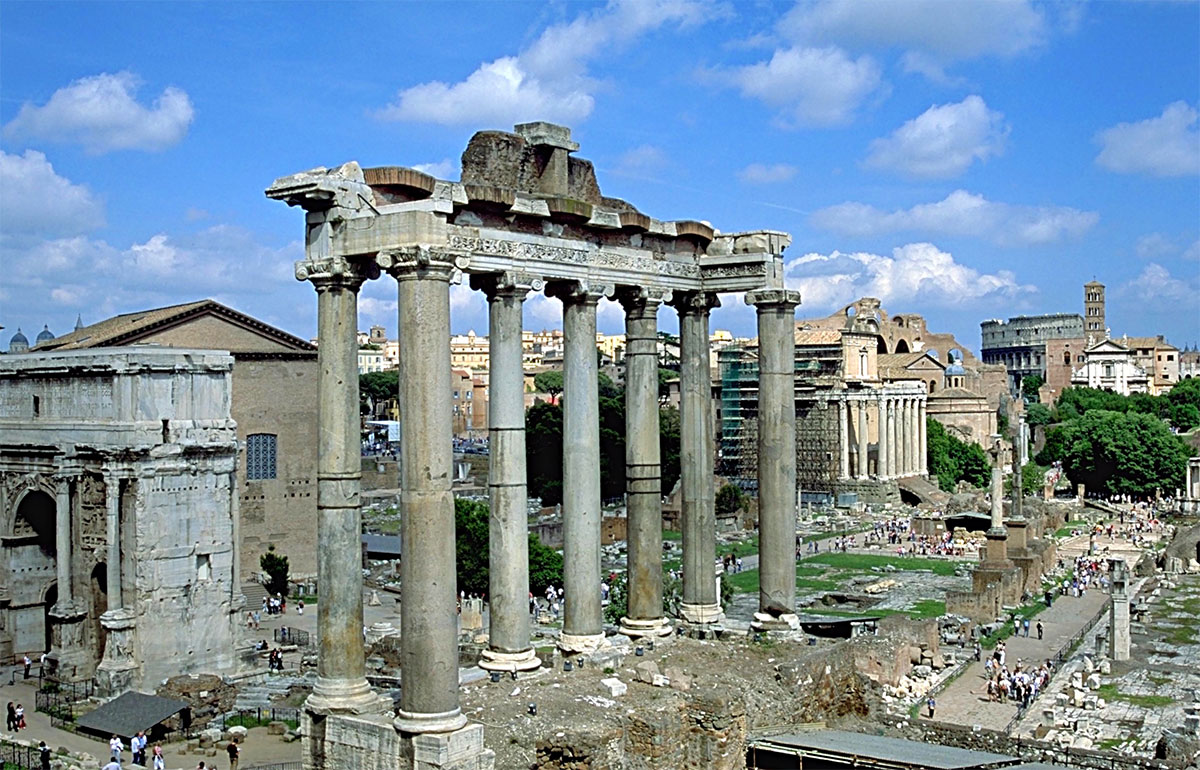
In the temple stood a statue of an old man with the head covered. In his hand he held a scythe, the symbol of Saturn (see photo 4). The feet of the statue were tied together with a woollen thread that was loosened during the Saturnalia so that also the god himself could join the festivities. It was a public holiday in which everyone could participate. The schools gave this day off, courts were closed, convictions were delayed and it was also strictly prohibited to start a war during the festival. In other words: the whole public life was quiet. Anyone got the opportunity to celebrate the festival and this made the Saturnalia one of the most popular events among the population. The festivities were originally only on December 17, but later on extended till December 23. Of course it was held to honour Saturn, but also to celebrate the end of the agricultural year.
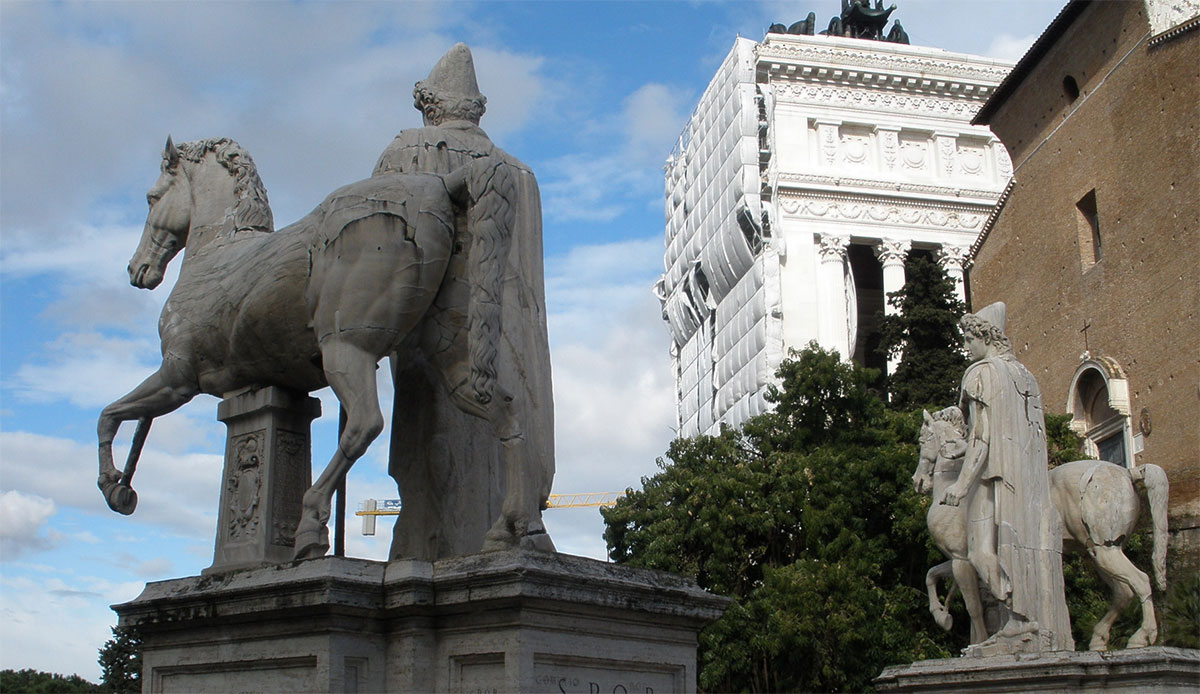
In the morning, the men rose early to go bathing. The dress was also different in comparison with other holidays: the stiff gown remained in the closet and instead the Roman citizens wore loose, easy robes. One wore a pileus on the head, a hat that symbolized freedom; the symbol of a freedman. After bathing everyone went in the direction of the forum to the Temple of Saturn, where sacrifices were carried out in honour of the god. During the sacrifice, according to a retrieved Greek use the Romans uncovered their heads. Normally during religious rituals the head was covered with the gown, but on the Saturnalia the Romans believed that no bad omen could interrupt the festivities.
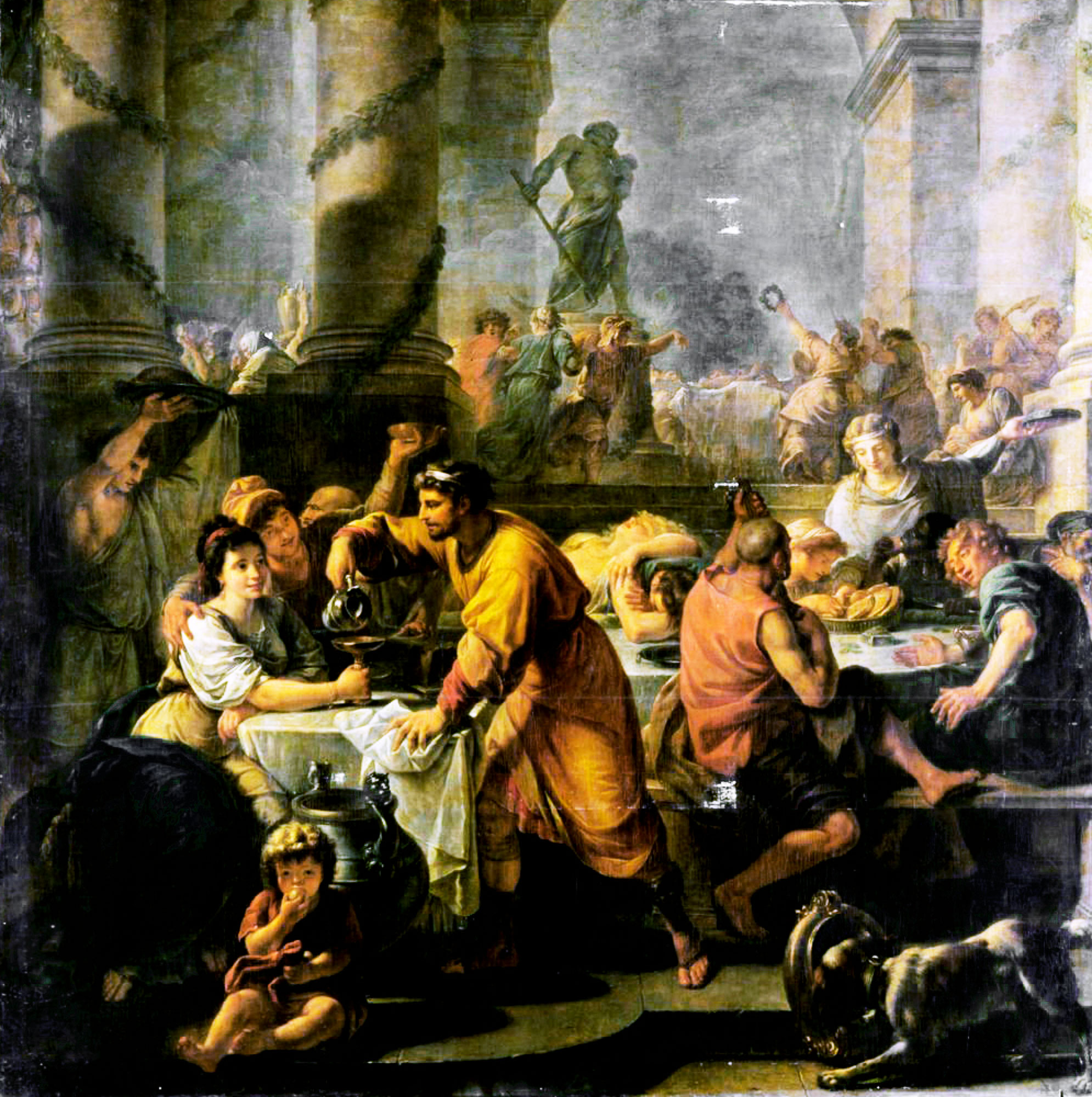
After the sacrificial ceremonies there was an official banquet outside the temple. After that most people left the forum wishing each other ' Io Saturnalia ' and went home to continue the party. This often resulted in excessive drinking and festive meals, making the word saturnalia in Latin synonymous to ' orgy '. One of the costumes was the election of a ' King of the Saturnalia’, an ordinary man from the street who gave orders to everyone, lord or peasant. Also small gifts, known as sigillaria, were exchanged.
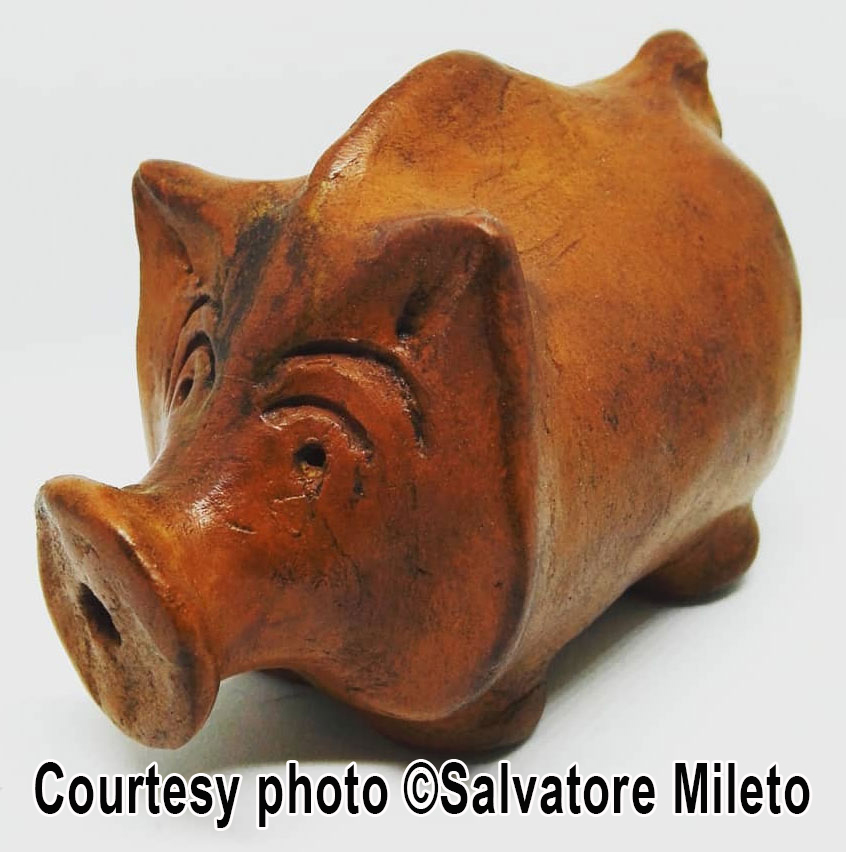
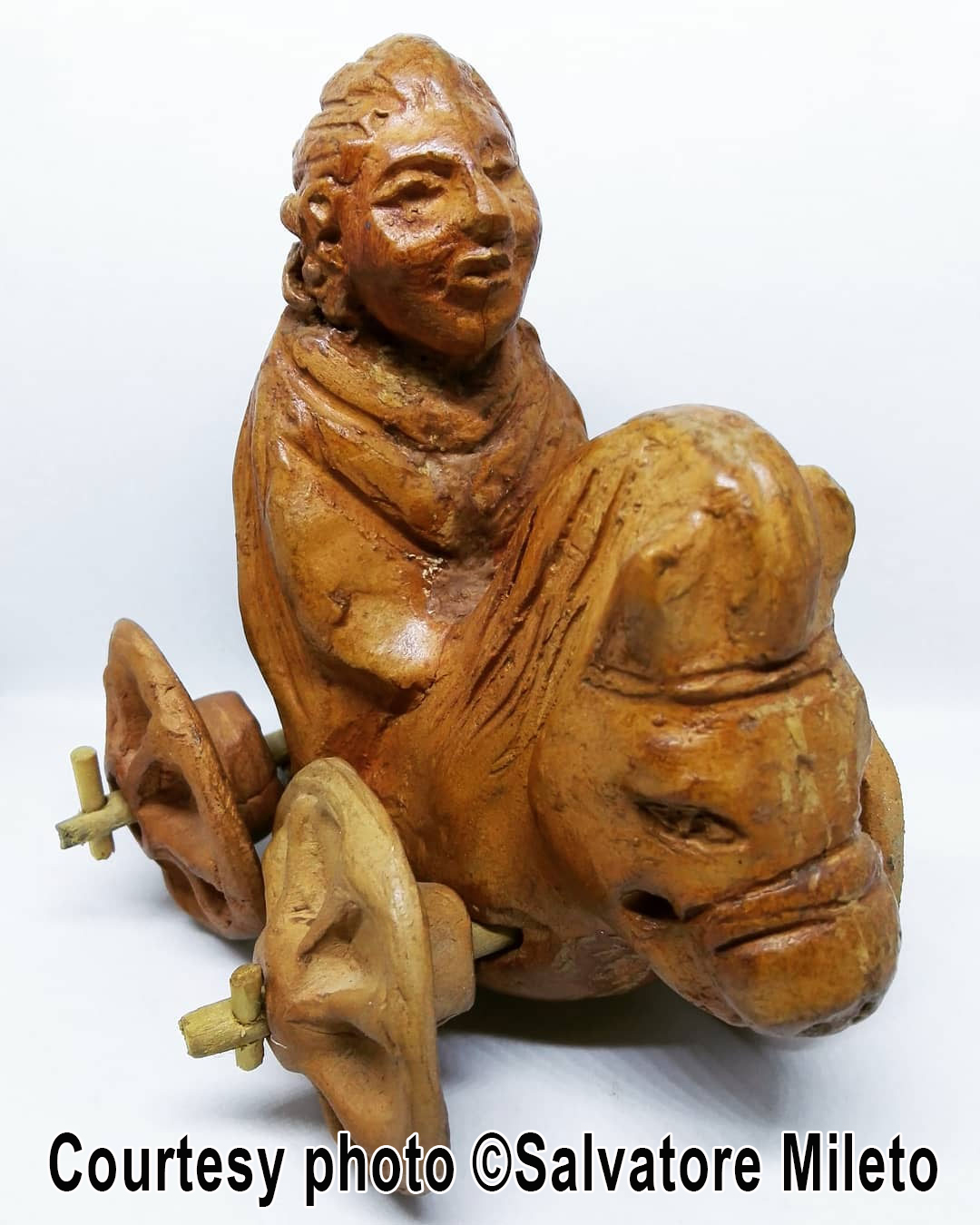
Traditionally this were candles, earthen masks or puppets. This was related to a story about Hercules and the population living originally at the foot of the Capitol hill. An oracle had told them to sacrifice each year a number of human heads and meale bodies in honour of Saturn. When Hercules heard what kind of cruelties were committed, he interfered. He suggested to replace the human heads by earthen dolls and human sacrifices by candles. Thus started the tradition of giving presents to the host if one was invited for dinner or to people who, for one reason or another, earned to receive a present.
One of the most striking customs of the Saturnalia was the changin of the roles: slave became master and master became slave. During the meal, the slaves were served by their masters. Also during the game of dice, which was normally prohibited, but for the occasion admitted and lord and servant played on equal footing. This gesture had to remember the “Golden Years” under Saturn in which there was no distinction made between the people. It was a chance for the master to thank their servants for the work done.
Later on, when the Roman Empire accepted Christianity as the only permissible faith, the Saturnalia were adopted by the Christians. And that brings us to Christmas.

The Saturnalia Aad X-mas
The feast of Saturnalia, originally connected with the Roman god Saturn, still remained the most popular folk festival for a long time. Also inside the Christian world. Pope Julius I (337-352) wanted to change this and came up with the following solution:
Although the exact date of the birth of Jesus was unknown, Pope Julius declared that it had to be celebrated officially on December the 25th, around the time of the festival of the Saturnalia. Most likely he wanted to create a Christian alternative for the still huge popular Saturnalia.
A second reason was the fact that the Roman Emperor Aurelian in 274 had declared the 25th of December to the feast of another Roman deity, the Sol Invictus (the invincible Sun). Julius I opined that he, by connecting those events together, could convert more people to Christianity. On top of that, he probably was influenced by the prevalent idea that Jesus had died on the same day as the conception of Mary. Jesus died during the Jewish Passover that was celebrated in the third century on the 25th of March. Therefore, Jesus had to be born, 9 months later on the 25th of December. So from that moment on Christmas fell on December the 25th while maintaining a large part of the customs that came with the Saturnalia celebrations.
During the middle ages Christmas was especially a celebration of drinking, gambling and overeating. The expression io saturnalia continued for many centuries the official Christmas greetings. In France, England and Switzerland the ' King of the Saturnalia ' still lived on for a long time under the name of ' King of the Misrule’. In many countries it was a habit to declare the one who found the bean or coin in a bread or cake to the King of that day. The habit of giving gifts reflects the Roman tradition of sigillaria and lighting of advent or Christmas candles is a reminiscent of the Roman use of torches and wax candles and, as has been said already, both Saturnalia and Christmas are strongly associated with eating, drinking, singing and dancing.
IO SATURNALIA
sources:
Miller, John F. "Roman Festivals," in The Oxford Encyclopedia of Ancient Greece and Rome (Oxford University Press, 2010),
Macrobius, Saturnalia, trad. introd. annot. P.V. Davies, New York, 1969.
R. Bell, Dictionary of Classical Mythology: Symbols, Attributes and Associations, Santa Barbara, 1982.
- notes
- 1:Lucas 2:1-7
- 2: Vatican Museum. Photo: Fubar Obfusco
- 3: Detail of the right side of the altar dedicated to the god of Malakbel and gods of Palmyra decorated with a bas-relief depicting the god Saturnus with a scythe (Roman artwork) in museo capitalino Photo: Jean-Pol GRANDMONT.
- 4:Livius: in his AB URBE CONDITA
- 5:Photo: Andreas Tille
- 6:Statues at the Campidolglio in Rome.
- 7: Source/photographer: http://elgloboenlaluna.blogspot.com/2012/12/felices-saturnalias.html/li>
- 8: Roman toys. Roman German Museum in Kölln
- 9: Roman nursing bottle. British museum London
- 10:"The King drinks" by David Teniers the younger "Lord of Misrule" (painted between 1634 and1640)-Prado Museum






 We are committed to providing versions of our articles and interviews in several languages, but our first language is English.
We are committed to providing versions of our articles and interviews in several languages, but our first language is English.